Magicke Symbols & Tools~some graphics are click on links to more detailed explanations~ 
Symbols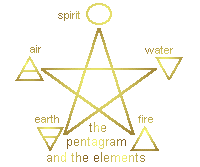 The Pentagram figures prominently in paganism and has many symbolic meanings. The Pentagram, or five pointed star, surrounded by a circle symbolizes the five elements: Earth, Air, Fire, Water, and Spirit. The circle which surrounds it means infinity; the Great Mystery, sacred space, the wheel of the year, and interconnectedness to all being. It also symbolizes the feminine aspect of creative energies; Goddess or a woman standing within sacred universal space. The Pentagram DOES NOT represent Satan.  I am not sure where this Celtic Pentagram/Knotwork originated; having studied knotwork in Celtic tradition and looked at this piece, I have never seen this symbol in any of the pieces that have come down to us today so I am assuming (and yes, we all know what that word really means) that it was created by a modern artist. Traditionally, the Celts had a very stylized art reaching its peak in the La Tene period and characterized by interlaced designs based on complicated geometrical formulae - nobody said anything the Celts did would be uncomplicated. The stylization of animals, leaves, and the natural world was based on the belief that everything in the natural world was connected and sacred. To render such things in art in a realistic sort of way was to bring the wrath of the Gods down upon your head. This last comment, could, however be some scholar'sculturally biased viewpoint. As the Druids left very, very few written records (most of their teachings being oral, and what books they did have being burned by the Romans and Christian monks) it is difficult to determine with any certainty exactly what their art meant to them. Perhaps it is was meant to be honored just for it's aesthetic value alone. 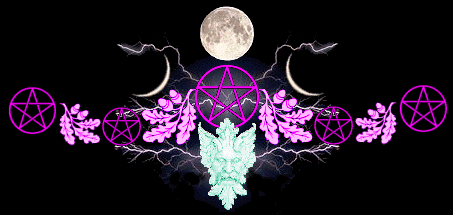 Balance... what exactly is balance? We talk about being balanced, unbalanced, restoring balance all the time - but what exactly do we mean by that? If we look at the graphic we see the Great God represented here as well as the Great Goddess - so a balance between the male and female deities as well as male and female energies is implied here. We find this energy everywhere within nature for one cannot exist without the other. The exchange of energy must be mutual in order for the cycle of creation/destruction/creation to continue; put another way the cycle of birth/death/rebirth. The exchange of energy between the male and the female at its highest level (the cycle of creation, the cycle of seasons) is a constant. It is forever flowing and in a state of flux... ebb and flow, ebb and flow - so can it be said to be truly in balance? What do we really have when we have perfect balance? When things are in perfect balance, there is no energy exchange, hence, things become stagnant. Is perfect balance a desirable thing then? It is more important to recognize that energy will always flow to where it is needed. So, if we imagine a set of scales, when energy flows to one side, it creates an imbalance on the other side; and so it goes, flowing back and forth, in a cycle of continuous exchange. When we feel off balance, or unbalanced it is our body's way or our psyche's way of telling us something is drastically wrong within and that we need to make some lifestyle changes. Changes can be as simple as getting rid of unhealthy habits or relationships, meditating more, taking more time for self care or for spiritual pursuits. When there is perfect balance there can be no change and there can be no growth! The ancients knew this; they also knew the world is in a constant state of change so why fight it? A true adept merely takes that energy and makes it work for him or her! The Balance gif also reminds us that in our tradition both male and female are honored. There are times when they work separately and times when they work together, but one cannot exist without the other. This symbol reminds us of the Wheel of the year, the passing of the seasons and the moon and solar festivals; that we are part of a greater whole and are connected to each other and all things. We too are a part of the cycle of Creation. Where are our personal energies flowing? How are we contributing to the greater good of all? Where do we fit in the larger scheme of things? Where are you putting your energy? This symbol has many, many layers of interpretation: male/female; light/dark; solar/lunar; fire/water; God/Goddess (to name a few). It is two things and a possible third (which is the true thing) in the druidic manner of understanding. For example, here we have the God and the Goddess; separately they are two things each containing its own truth. Together they create a larger single thing, which is the real truth. I leave the rest for the student to muse over on their own!  The Horns of Isis is a symbol that does not figure in druidry, but has been adopted by many neo-pagans to symbolize the Great Mother. As well, it can be interpretted to be the horns of Herne (but as aforementioned is more commonly used to symbolize the female Deity, particularily in the Wiccan traditions, and especially in the Egyptian traditions).    Ahhh, this is a druidic symbol of the highest order! The Triskele refers to the Three Worlds of existence (this World, the world of men, and the Otherworld). The Otherworld could be (from a Welsh perspective) further divided into Annwn (the Underworld), and Caer Arianrhod (the Upperworld). The Triskele also symbolizes the Three Elements in Druidic belief, which are Earth, Sea, and Sky. **Note that the Druids had 3 elements (not 4 as in other Pagan traditions). The Triskele more importantly refers to the triune and triad druidic traditions evident in their Gods and Goddesses, their laws, and their myths. Two things are presented with a third and most likely thing, being the true thing. Note that their Goddesses do not follow the Maid, Mother, Crone traditions of many other pagan paths. More accurately, the three aspects of Celtic Goddesses reflect Sister Goddesses; the Morrigu/Morrigan comprised of Nemain, Badh Catha and Macha being one. The Triskele most commonly represented moves in a counterclockwise motion... going against the natural order. The reason for this has not come down to us, but logically one could deduce that it symbolized the need to go against order in order to create order... meaning, to quote Monroe, "the truth against the world"- for druids did just that: they provided truth in their teachings, philosophies, laws, histories (as much as some others may not have wanted to hear it!).  There is alot of confusion surrounding the sun and the moon and how they figured in Druidic belief. Much of what is believed is clouded with current neo-pagan thought. In many respects modern Druids may have to reconstruct rituals and belief systems accorded to these Deities simply because there is very little concrete information to go on, historically speaking. According to some, the Sun (especially in Irish belief) is a female deity known as Grainne, the source of life itself. Naturally that would infer the moon is the male deity; however, we do not find references to this as such in ancient primary source texts. It could be that the Irish Druids saw the moon as another aspect of Sun, a dark aspect of the female sun deity for instance. We must always be careful that we are not interpreting symbolism/data of the ancients relevant to our own cultural bias or belief systems (this may have occurred with the modern place of the sun and moon in neo-pagan or druidic belief systems). Still other scholars attribute the sun to the Daghda, Belinos, Lugh the Shining one, or Ogma. Still others accord it to Bride, Brighid the Bright One, and daughter of the Dagdha. Somewhere along the line (no one knows where) the sun/solar energy became associated with male Deity and the moon with female Deity; I suspect this stems from Greek influence, and this has largely been the tack taken by modern day pagans and Druids. The Sun then, symbolizes the male God-force - the elements of fire and air combined. It's passage marks the solstices and the yearly life cycle of the God in his dance of creation with the Goddess. The Moon represents the unknown, the subconscious, the emotions, monthly cycles of power, intuition, flow and movement, those things which are hidden, and in some ways the Goddess (although as aforementioned this is not documented to my knowledge, within druidic belief systems). More accurately the Sun and it's positions as it moves through the heavens on it's yearly journey marks the dance of the Lord and Lady together: at Imbolc when the Lady rouses herself and brings growth and new life to the earth which has long lain sleeping under the blanket of winter; at spring solstice when the Lord rouses himself from his sleep and joins with our Lady at Beltaine mixing their energies to bring forth abundance and prosperity; at summer solstice when their powers are in balance with one another (when the Lord reigns supreme for a moment and then his power ebbs as the Lady brings forth the abundance they have created together to a fruitful harvest at Lughnasadh); again a festival in honor of the God, who has spent his energy and now begins to wane; to the vernal equinox when the Lord goes into slumber passing from this world so that the Cailleach may reign in the dark of the year beginning at Samhain. And hence to Midwinter Solstice when again night and day are in balance with each other and the Sun God slowly grows in strength ~ and so the cycle goes, year in and year out. 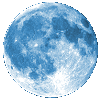 The moon in it's feminine aspect is especially important to female druids/druidesses/dryads for our bodies and powers wax and wane with the moon. Many of us will feel at our most powerful at certain moon phases (and this may vary from person to person). The moon phases of course will dictatethe time to perform certain rites, spells, mundane actions; but necessity often dictates that we cannot wait for the correct lunar phase (in that respect intent and urgency of need take precedence). Based on the Coligny Calendar we know that the lunar phase was important to the druids (this calendar notes favorable and unfavorable "days" according to the moon - bear in mind that the druids counted time from moon to moon) and they counted nights, not days - that is, they computed time based on a lunar calendar not a solar calendar such as we have today. They obviously had more than a rudimentary knowledge of astrology and planetary movements/alignments. As they were travellers and traders they very likely had their own names for the stars and used them for navigational purposes as well.  This symbol (again) is not used in druidry, but more commonly in Wiccan traditions. It refers to the waxing, full, and waning moons and indirectly symbolizes the Goddess' influence regarding the natural powers (especially of women) in snyc with the moon and the influence exerted on the earthly-sphere. 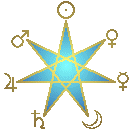 You know, I would be less than honest if I claimed to know what this was because fact is, I havent a clue! So if anyone out there does know for sure, then I would enjoy hearing from you! However, I am not above taking an educated guess... I think that this symbol represents the Pleiades, a group of seven stars known to the Ancients as the Seven Sisters. Some believed (and still do) that mankind originated from that stellar system before they mated with the daughters of men. The Pleiades figure in Kabbalistic writings, Egyptian, and Native American belief systems. Surrounding the seven pointed star symbol we have the glyphs for the first seven planets known by the Ancients to comprise our own planetary system - so this symbol on the whole would seem to represent the Heavens and the Heavenly bodies and (to go a step further) the heavenly bodies of course represented the Gods and Godesses themselves. The Pleiades are/were thought to be the origin of the Supreme Deity/ies and the Heavenly Hosts (for lack of better terminology).  Every page needs a bit of humor! Cats have been our familiars since time immemorable when they assisted man by killing vermin and thus preventing disease. The Plague years in European history are partly due to the extermination of cats by zealous witch hunters; no cats plus lots of rats equals bubonic plague! That'll teach them to mess with Goddess! Cats in Celtic belief were sacred to our Lady and were considered to be Otherworldly animals. In fact today in some parts of the Highlands there still exists the Scottish Wild Cat, a little bigger in size than our domestic cat but with a very, very nasty temper should you inadvertently corner one. Cat could travel between the worlds, and as many who own cats know, a cat can always sense when spirits are about. My own cat, a Siamese named X'iang H'ai, also pre-diagnoses serious illness in our family. (Like most Siamese) X'iang H'ai is not overly cuddly, yet whenever someone is about to become ill she will sit on their chest and seem loathe to leave them for any length of time. I have often wondered if the Egyptians had any influence over the Druids (and it is highly possibly as we do know that both cultures travelled the sea routes and traded widely). We also know that culture does not evolve in a vacuum; it is influenced by every other culture with which it comes in contact. What I allude to here is that Bast, the Egyptian Cat Goddess, acted as a guardian to women and to cats themselves; symbols of the Goddess were considered messengers of the Underworld. During the Middle Ages if you were a woman who owned a cat, you would have been suspected of being a witch. The funny thing is, many of us who follow pagan ways now do keep a cat or two about the house as familiars and just plain old good company. The cat is (in some ways) still then guardian of hearth and home (X'iang H'ai thinks she is a protection cat - and will answer the door at my heels, and growl at strangers; she will also investigate strange noises at night) As many may already know, Siamese cats were bred to be temple guardians and are known to physically attack intruders.... goooooood kitty... (Dogserious thinks X'iang Hai is demon spawn...hehehe) As to bats: well, they look like rats with wings and symbolized the Devil in Medieval art. They really aren't a pagan symbol, but they look good and scarey at Samhain as decorations (I do mean the paper or plastic kind- not real bats!) From a Druidic point of view, they could be considered an in between thing: neither animal nor bird, but whether or not they were considered as such has not been documented to my knowledge. They can (and do) carry rabies so one must always be careful not to handle them. Should you actually come into contact with one or more (like any animal) they will not harm you if you respect them and leave them alone to do their bat thing. They are very important ecologically speaking as they consume many times their weight in insects every night while feeding. Should you ever have to handle a bat (I found an injured one on my lawn once) use thick gloves as they can give a nasty bite (and be mindful of their fragile wings - their bones are hollow like a bird's).    Dragons do not appear in Celtic myth, but do appear in medieval literature. Dragons per se could symbolize chi power, tantric energy, or ley lines (natural power centers within the earth). Dragons can also symbolize otherwordly elementals; in many traditions there are air dragons, earth dragons, etc - these are most noted in Chinese, Japanese, and other Eastern traditions. The Dragon of course (to the Christian) is the embodiment of Satan who is more specifically alluded to in this aspect in the Book of Revelations; but to the Druids there were no dragons. However, my Reiki master saw a "dragon" hovering about me during a session, so it could also be said that dragons could symbolize one's own personal power, the unpredictability of that, and the need to master our personal power and use it wisely. We are after all, spirits having a human experience.  The Druids understood Raven to be the embodiment of the Morrigu in any one of her three sister selves, or in her entirety. Raven foretold who would live, and who would die to be born again on the field of battle. Thus it could be said that Raven is a messenger, carrying tidings of sudden and dramatic change. Raven also can prophesize as traditionally he foretold of death. However, as to the Celtic mind death is merely a transition and a new beginning, death brings the opportunity of rebirth. Raven, in prophesizing death and as a herald of death, could be said to be an Otherwordly being hence signalling the ability to travel between worlds. In Native American lore Raven is a trickster, forcing us to look at where we need growth; he is also a Creator spirit to the Haida people and in Celtic lore as well (for the Morrigu is sometimes interpretted as being a Destroyer deity). In destruction there is always creation. The Raven embodies wisdom, and the Native people believe Ravens to be very old souls capable of living for hundreds of years - that's what makes them so smart and wise! If you have ever had the opportunity to observe Ravens in the wild you will see they are keen , shrewd, and canny. Most often you will hear them before you see them (if you manage to see them at all). They have the largest vocabulary of any bird species on this planet... very, very intelligent indeed. Macha and Badh Catha have long been honored within my own grove (as there is very little information about Nemain.) Consequently, we were truly blessed to have had A'Kun among us. 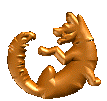 The fox doesnt figure prominently in druidic lore, although two things should be noted: 1) The red fox is actually red and white (although other coat color variations are widely common). Red and white colored animals (birds and other creatures) were considered to be sacred Otherworldly creatures so it is logical to surmise that the Red Fox fell into this category. As an Otherworld creature, Fox would have travelled as a messenger between the worlds and would have carried or bestowed its magickal/talismanic properties on whomever possessed the Fox or parts of it (teeth, strips of hide etc). 2) The famed Lindow Man (whom researchers believe was a druidic prince and whom was ritually sacrificed) was naked at the time of death except for a band of fox pelt around his forearm. This artifact earned him the name "Lovernius" which (from the Latin) roughly translates to "of the fox". Researches deduce that this armband of fox could have denoted noble status, druidic rank, clan or tribal affiliation or could have simply been a protective totemic talisman; we do not definatively know. Researchers believe that some dreadful calamity was threatening these Celtic peoples which caused them to make such a high status sacrifice. Early preliminary research findings indicated that in Lindow Man's stomach were remnants of his last meal which, when analyzed, proved to be blackened bread containing misltetoe & pollen - what we pagans know to be three sacred foods. His mode of death was by garroting, three blows to the skull, and possibly by drowning - the sacred number three again. As well, he was placed below ground in what would have in the least been regarded as a portal to the Otherworld, at the most a sacred pool. By his general good health and well kept appearance (hair trimmed, beard shaved, nails manicured) researchers believe he was likely a member of the nobility, and quite possibly a druid in his own right. It could be that Lindow Man was meant to act as a go between or a messenger to the Gods; apparently he accepted his fate peacefully and willingly as the autopsy show no signs of resistance or struggle. His facial expression is one of peace and serenity, if that is possible given the mode of death. Thus, the fox hide may have either marked him as such to the Gods, or may have served to help him into the Otherworld. For those of you who may be interested in further information regarding Lindow Man (II) and other related archaeological findings go to: http://www.clannada.org/docs/humrel.html http://www.curly.cc.utexas.edu/~dente/boglindow.htm or -for a bit of humor and actual museum photos- http://www.mesh5.com/tension/febmarch/bog.htm 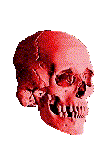 No truly Druidic home should be without one! (see Fhiona CovenCrafts page for your own personal skull candle holder) The skull figured prominently in the Celtic belief system; scholars speculate and put forth the theory that these people held that the skull to be the seat of the soul and that possessing the skull of your enemy prevented his reincarnation as well as bestowing the possessor with the deceased's strengths. In mythology, the skull possessed magickal powers of its own (The Voyage of Bran the Blessed). Heads were sometimes preserved in cedar oil. In some cases they were defleshed and displayed in niches of buildings, possibly temples or mortuaries. Due to these buildings and their niches some scholars suggest a cult of skull worshippers, as inside these structures were sometimes evidence of offerings. We cannot say for certain that these people practiced skull worship - reverence for skulls, reverence for ancestors perhaps? Yes. Worship? No. The presence of skulls and offerings together does not automatically imply that skulls were worshipped; such surmisal most likely is culturally biased considering lack of eyewitness evidence (an analogy being that finding Satanic publications on the same shelf as general Pagan or Neo-pagan publications does not mean all pagans are Satanists, although due to such proximal placement of materials this is most often "assumed" by the uniformed or ignorant.) 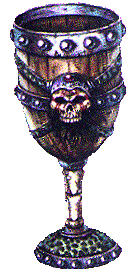 This item basically doesn't figure in ritual or practices, at least until Arthurian times when it became the Holy Grail and the subject of great quests. Although in common custom drinking from the cup of your host implied a protection or obligation of the host toward the guest. The act of drinking and sharing food was extremely sacred to the Celts, and was shrouded by rules as to how a good host and good guest should behave toward one another. These rules of social conduct and graces were actually incorporated into the Brehon laws, and Welsh Triads. If such rules were broken, an insult occured; then there were actions the injured party could legally take to redress loss of honor. These actions were most likely to be used by the nobility and upper classes, although there are records in myth which suggest that these courtesies were available to all levels of society except slaves. 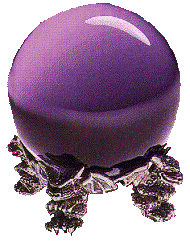 Again, this item does not figure in Druidic belief; the closest thing to it is the famed Philosopher's stone, references to which figure in medieval writings. This "stone" was more likely a mirror made from a thinly cut slab of finely polished obsidian or like material in which the alchemist gazed or scried into trying to read the future. There is some speculation that Druids, whether male or female, may have scried in a similar manner in certain holy pools of water... but again, we have no definative proof. We do know that they did observe the flight of birds in making their prophecies and predictions, as well as a form of divination in which a druid wrapped himself in the hide of a ritually slaughtered sacred white bull, partook of it's meat , and went into a trance in order to divine while other druids attending the ritual chanted. (Caitlin Matthews) 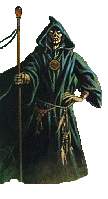 The Spectre of Death comes down to us from the Greeks with their underworld filled with daemons and nasties in general, but can be indirectly related to the Celts as it emphasizes that these people (especially their warriors) had absolutely no fear of death. Period. Death was recognized as being temporary and tranisitional, so much so that repayment of debts were often deferred until the next life. Hmmmm... basically a sound idea methinks - I wonder if I could work a deal with the credit card companies? Having absolutely no fear of death is what made the Celts absolute fearless and formidable foes on the field of battle; they literally had nothing to lose.  Again, this figure does not figure in druidic thought although the eagle is revered among many cultures as being a symbol of nobility, foresight, clear sight and messenger of the gods. Druids were superb smiths and as smiths were of the Fili class. They would have had druidic training according to their craft and would have known the proper incantations, songs, actions, and offerings to perform while in the divine act of creation. Celtic swords and other metal objects were prized for the high quality of craftsmanship throughout the known world in antiquity. In some Pagan traditions the sword symbolizes the element air and the eastern quarter - the quarter of the mind, intelligence, the intellect and communication. The eagle is associated with that quarter as his famous eyesight symbolizes foresight. This figure leads to the topic of our next discussion (click here to go to Deflating Religious Zealots or How to Fend off Fundamentalists....)  Tools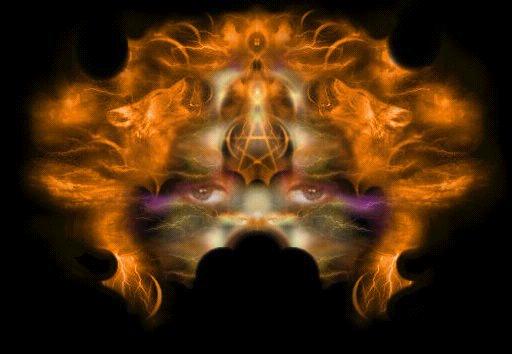 The first premise is that the entire universe is molecular in structure and each molecule contains an electrical charge. We know from science that the brain likewise emits an electrical charge, especially when engaged in thought. Therefore simply put, thoughts are things, and as such we can create our own reality. According to the ancient Greek philosphers (specifically Plato) all things exist in reality according to the Principle of First Cause (which basically reasons that all things must exist in thought before they can manifest in physical reality). To backtrack slightly, we know from the laws of physics that energy can be neither created or destroyed - it merely changes form. When one molecule/atom/subatomic particle however miniscule has its electrical charge altered by a force exerted upon it externally it sets up a chain reaction among neighbouring molecules/atoms creating a sort of etheric domino effect in which the states of these particles are in a constant state of flux - of ebb and flow - a constant exchange of energy. This then supports the premise that thoughts are things and do contain a force of their own; this is the fundamental building block of magicke and is the primary tool that the magician uses in ritual to bring about the desired change in the physical. Consequently strict focus is required so that the mind is able to first create and manifest on the etheric, and then to bring it into physical manifestation. It is not sufficient to say a few words over some items with mystical waving of arms to effect magickal change; energy and focus are required. Therefore one must have a clear idea of exactly what is desired, how the change will be effected, and what (if any) the long term effects will be not only on the self but on others who may be inadvertently affected by the magickal undertaking. First the thing is thought of in the mind which then sets up the astral vibrations and what you send out (even unintentionally!) is what will be returned to you. This places the onus squarely on the practitioner to be constantly mindful of ones thoughts and desires. For instance, I am sure we have all woken up one morning and thought, "What a lousy day." Should we be surprised when that is exactly how the day manifests itself? So...right thought precedes right action! And a brief word here on mundane worries: Worry is counterproductive. All it achieves is ulcers, headaches, and sleeplessness. Energy that goes into worry is energy that could have been spent on actively finding viable solutions. In the words of the late great Robin Skelton (for the magicke user) there is always something that can be done about a situation! In order to have a clear and focussed mind all of the chakras must be balanced, open, and working properly together. Otherwise the energy flow within the body is compromised and it is not possible (or it is more difficult) to raise and accurately direct magickal energy. The Body-Mind-Spirit connection needs to be working in synchronicity and optimal condition. This is most easily achieved by a good diet, proper rest and exercise, and proper frame of mind (usually achieved through regular meditation). It is most important that the magicke user not be carrying past baggage... this serves to block the chakras and lowers the spiritual vibrations. These can manifest as mental, emotional, or physical illnesses or as various forms of addictions. In these instances it is most appropriate to seek professional counselling if the appropriate support and counselling by a qualified professional cannot be found within the Grove or Coven. Circle Sanctuary used to have a list of pagan counsellors- their website is www.circlesanctuary.org/page2.html or you can email them at circle@mhtc.net attention Selena Fox- Selena is a licensed therapist with many years experience; her time is not free however . The Circle may be able to connect you with a pagan therapist in your area. As magicke users we have a responsibility to be constantly working on our own issues. Druidry and many other paganpaths are not about magicke at all, primarily they are about growth and the striving for excellence. Sort of like the US Marine motto says-"Be all that you can be". It is moot to note here that not all who follow a paganpath are magicke users. To desire to work magicke in order to have power over others or for the sake of having power is wrong!!! If that is ones reason for taking up the path then one is definately going down the wrong path. Our ways are not about having power - our ways are about spirituality, finding ones place, self enlightenment, growth, and self empowerment. Magicke is a very Zen pursuit. Knowing that you have the power or ability and knowing when or when not to use it gives one the most real power. Our path concerns finding and honoring the sacred within all beings and all things, understanding our connections to each other and the larger universe, and taking responsibility for our thoughts, words, and deeds. Consequently embarking on this path for shock value, notoriety, or power (real or imagined) not only damages the self but it gives the rest of us who are sincere practitioners a bad name in the public eye. As pagans we have a larger responsibility to conduct ourselves with authority and dignity in the public sphere in order to dispel the myths perpetuated against us and foster understanding and tolerance between pagans and non-pagans. This cannot be accomplished with any amount of credibility if there are practitioners who (because of thier own insecurities and personal issues) foster and encourage the myths and medieval mindsets of those who do not understand us. One last comment on the mind: Many shamanistic traditions use(d) hallucinogenic drugs/herbs to enhance Otherworldly journeying and visions. Our Grove does not advocate this practice for these substances wreak havoc with our own natural and powerful chakra energies. As a teacher it is my view that a student either has or does not have natural abilites, and no amount of drugs is going to alter that condition. Adepts are born, not made. It is only possible to build on and develop natural innate abilities; using drugs does not enhance them or make them magickally appear. There are many techniques used to develp focus (see Lessons and exercises) and to cleanse the self prior to any ritual undertaking. In order to effect the correct state of mind/body/spirit it is important to learn the correct meditation techniques. Meditation allows one to go into varying levels of altered states of consciousness useful and desirable in trance work, divination, scrying, channelling, journeying , OOB ( astral projection), etc. Deeper levels are used for OOB and Otherworld journeys, lighter levels used in certain forms of divination. There is a vast difference between true meditation and visualization; it is necessary to master both. Meditation is important as it is on the astral that manifestation begins once a thought has been formed. One way to be effetive in spellcraft is to effect change on the astral (after you have clearly identified what you desire to manifest through thought and visualization). Focus is essential to master first; meditation is the art of focussing on being unfocussed. Both take time, dedication, and practice to master. Once mastered these techniques bring a great deal of benefit to the mind/body/spirit connection, as well as enhancing any spiritual or magickal undertakings... See Lessons and Exercises for further information. Blessings on all from the Lord and Lady!   

|